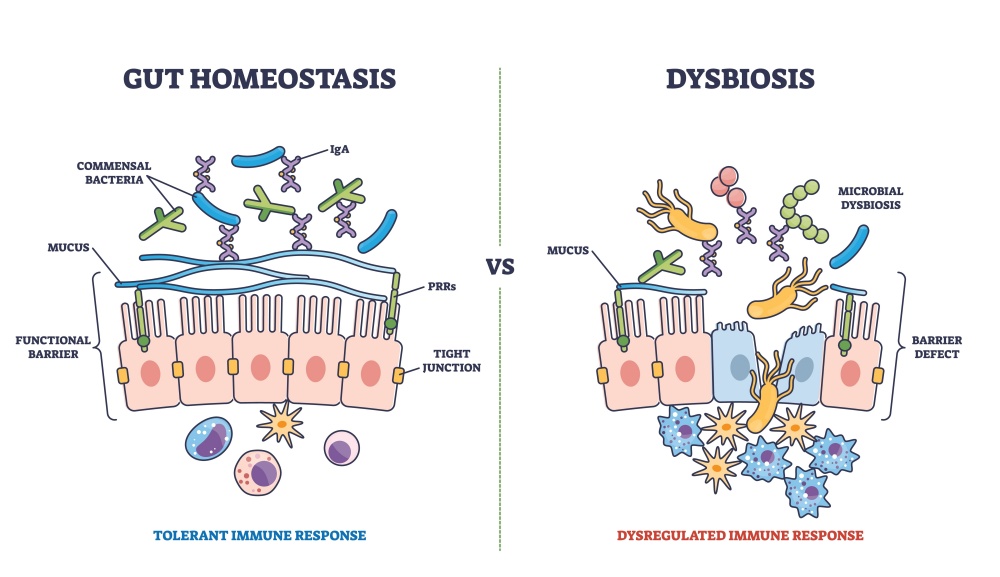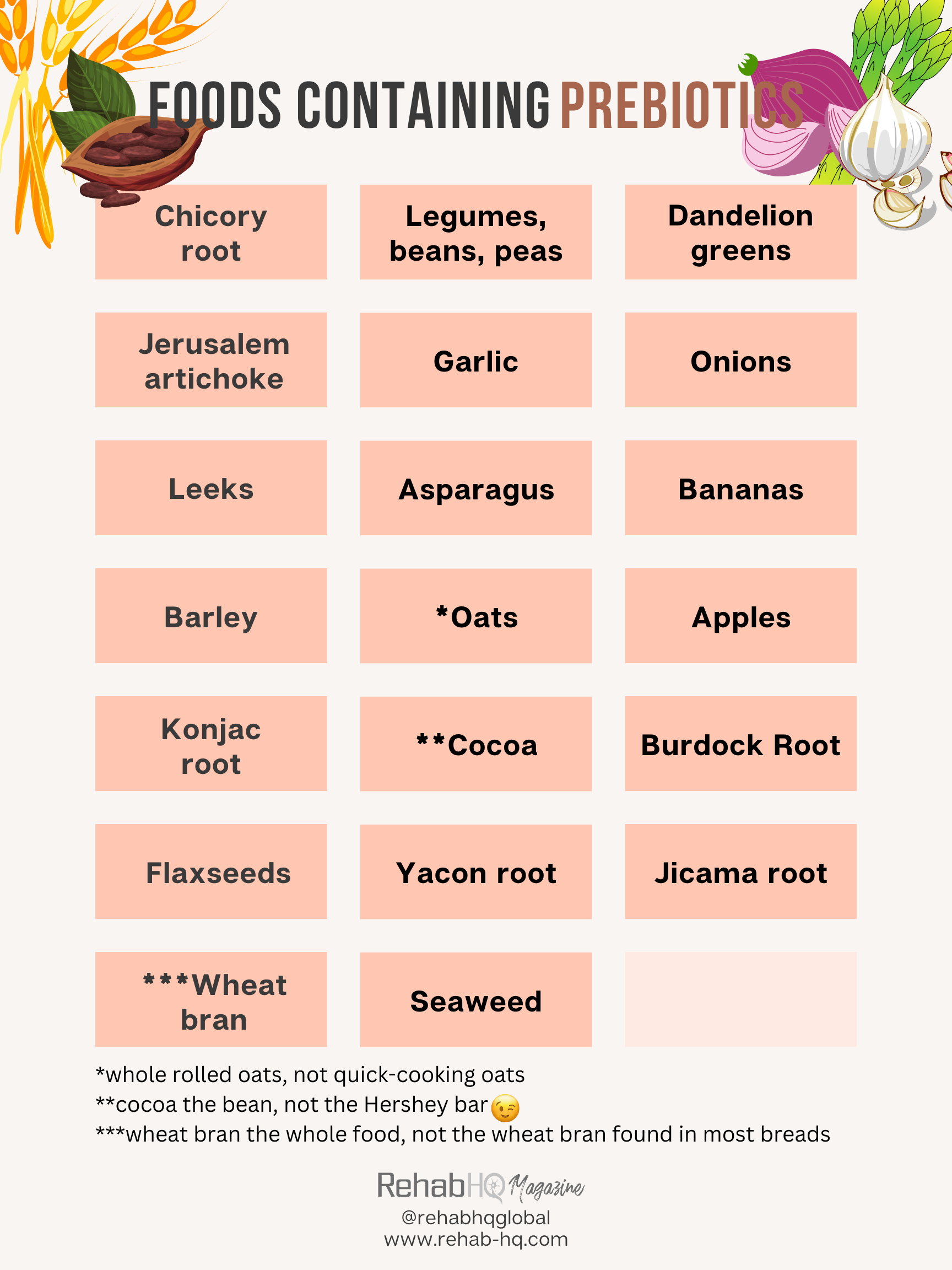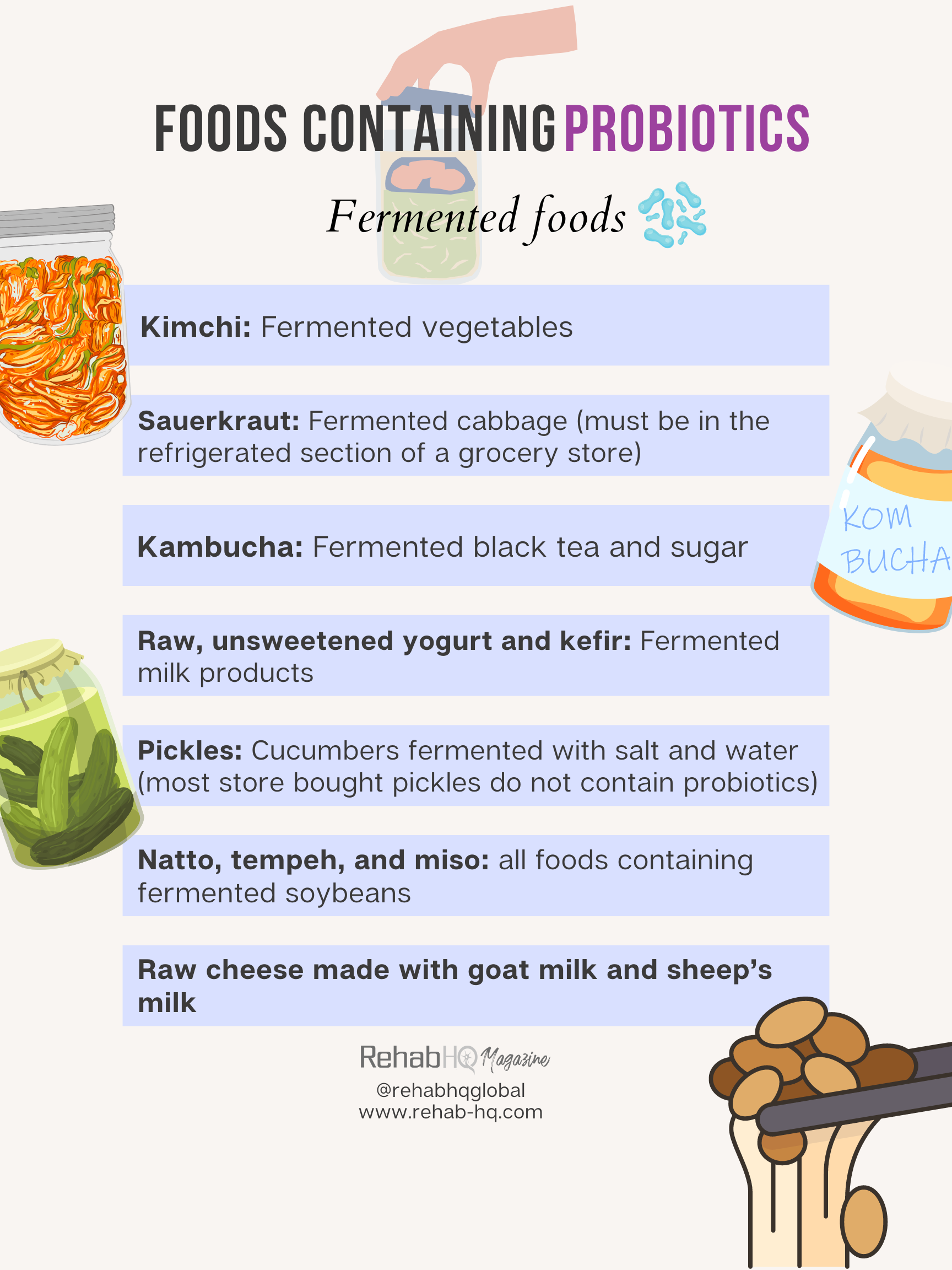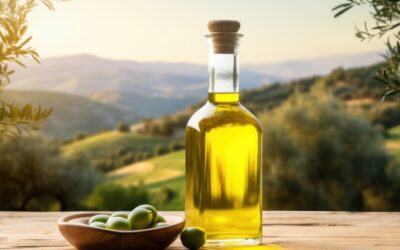The human body is home to trillions of microorganisms, forming a complex ecosystem within our gastrointestinal tract (GIT) known as the gut microbiome. Long overshadowed by the spotlight on human cells, this intricate community of bacteria, viruses, fungi, and other microbes has emerged as a fascinating field of research in recent years. Scientists have come to recognize the profound impact of the gut microbiome on our overall health and its intricate connection to various diseases. From maintaining digestion and immunity to influencing mental well-being and metabolism, the gut microbiome plays a pivotal role in shaping our overall health span and quality of life. In this article, we delve into the depths of the gut microbiome, exploring its diverse composition, its influence on human health, and the intricate interplay between the microbiome and diseases. Join us on a captivating journey as we unravel the secrets of this microscopic world and unlock its potential implications for future healthcare.
How does digestion work?
The story of the gut microbiome must begin with an understanding of how digestion works.
Food digestion is the process of breaking down food into smaller molecules that can be absorbed through the intestinal walls into the blood stream. These molecules are then used by the body for cell energy, growth, and repair. Here’s a general overview of the process:
- Ingestion and swallowing: Food enters the mouth and chewing combined with enzymes in saliva start the structural breakdown of food into smaller pieces and swallowed.
- Stomach digestion: In the stomach, the food mixes with acidic gastric juices helping to break down proteins, while muscular contractions mix and churn the food to form a semi-liquid mass (chyme).
- Small intestine digestion: The chime passes into the small intestine where it mixes with enzymes released from the pancreas and liver that further breakdown carbohydrates, proteins, and fats. The small intestine is where the majority of digestion and absorption occur.
- Absorption: The inner wall of the small intestine passes the nutrients, such as simple sugars, amino acids, fatty acids, vitamins, and minerals into the bloodstream. The bloodstream carries these nutrients to various cells and organs throughout the body.
- Large intestine (colon) absorption: Undigested carbohydrates that escape the small intestine are fermented by bacteria and turned into short chain fatty acids (SCFA). Additionally, the colon absorbs water and electrolytes from the material, forming feces for elimination.
Different nutrients are broken down and absorbed at different points in the digestive system. Carbohydrates are mainly broken down in the mouth and small intestine, proteins in the stomach and small intestine, and fats in the small intestine. This process is regulated by hormones and controlled by the nervous system to ensure proper digestion and absorption.
One of the most critical components of this process is the bacteria that we take in with our food. Yup, you read that right. We consume bacteria in our food that is actually SUPER beneficial for our survival and is the topic of this article. The gut microbiome.
What is the gut microbiome?
The human microbiome is the collection of the microbes (bacteria, fungi, parasites, and viruses), their genes (yes, bacteria have their very own DNA), and their products that colonize our body.

It is estimated that trillions of microbes live (peacefully) inside the human body and are credited for their ability to assist organs to function properly. Each person has their own unique population of microbes. This is partially determined by our DNA, but also by exposure to different environmental conditions.
However, this is not something that we are born with. Newborns have minimal bacteria and are for the most part “sterile”. With that said, at birth, humans start to colonize bacteria which begins with exposure to the mother’s vaginal canal. Infants delivered by cesarean must receive supplemental microbes from the mother to develop a healthy microbiota but also will get some exposure via breastmilk.
As infants grow and develop into little humans (and eventually adults), the GI tract becomes populated with more and more bacteria dependent upon external factors (our environment, types foods eaten, feeding habits and the mothers microbiome) and Internal factors including the pH of the intestine, environmental temperature, and microbe interactions (how well different microbes play together).
What do the bacteria do in the GI tract?
The gut microbiome, can be both helpful and harmful. We carry far more “healthy bacteria” than we do “less helpful bacteria” and both are necessary to sustain human life.
The number of bacteria very throughout the GI tract with the largest concentration residing in the large intestine or colon.
How does the microbiome affect the body?
The microbiota offers many benefits ranging from strengthening gut integrity, harvesting energy, protecting against pathogens and regulating the immune system.
The human gastrointestinal (GI) tract is one of the largest interfaces between our body and the outside world. In a lifetime 60 tonnes of food pass through the human GI tract along with an abundance of microorganisms. The number of microorganisms inhabiting the GI tract has been estimated to exceed 1014 which is nearly equivalent to the number of total human cells. Holy smokes that is a TON of bacteria taking up residents inside of us. Crazy, right? Ok, but I digress. Back to these little organisms…
Starting at the top, our saliva contains microbes that our swallowed with our food. But many of these microbes lose steam when they hit the acidic gastric juice, and digestive enzymes in the stomach, intestines, and colon.
Gut bacteria are a source of energy
The bacteria in the colon produce a variety of vitamins and modify/transform bile (mentioned earlier). Combined, these processes serves as a fuel source for the bacteria in the colon and further help the body to extract nutrients and energy for absorption.
Gut Bacteria Produce Short Chain Fatty Acids (SCFA)
The large intestine has the highest concentration and diversity of microbes. The microbes in the large intestine ferment dietary fibers and undigestible carbohydrates producing short chain fatty acids (more on this in a little bit).
Short chain fatty acids (SCFA) are produced from the fermentation of dietary fiber found in food and include butyrate, propionate, and acetate.
Butyrate is known for its role in providing energy to colon cells and cause colon cancer cell death. Futhermore, butyrate maintain the tight junctions between the cells that make up the intestinal lining. Think leaky but syndrome.
Propionate is transferred to the liver and involved in glucose regulation and initiating a cascade of events involved in satiety.
Acetate reaches the tissues of the body and is credited for its role in (including the no limited to) cholesterol metabolism
Gut Bacteria Defend us From Pathogens
Now, a cool thing about “good bacteria” is that they are constantly fighting to “inhabit their land”. They do this by competing for the receptor sites of the cells that make up the intestinal lining. By doing this, they prevent harmful bacteria from attaching to the cell wall. And thus, “maintain their ownership of the land”.
A host of gut bacteria are also involved in maintaining the mucus lining of the gut (a protective barrier).
The combination of the microbiome’s ability to maintain the tight junctions between the intestinal wall cells, prevent harmful bacteria from attaching to these cells, and maintain the mucus lining help to protect the body from harmful molecules entering the body.
Gut Microbiota and Disease
On the other hand, any disruption in the concentration, type or functionality of the “good bacteria” can cause problems. The term used to describe this disruption is dysbiosis.
Dysbiosis and Chronic Inflammation
The main mechanism that might link dysbiosis to many diseases is the breakdown of the intestinal wall. When this occurs, harmful molecules can get extremely close to “sensors” in our blood that will detect the foreign invader and initiate an immune response. An acute immune response is beneficial in that the body will deploy immune cells to kill and remove the foreign invader. However, a chronic immune response is bad and can cause damage to most human cells leading to disease.

There is growing evidence that dysbiosis is linked to diseases such as irritable bowel syndrome (IBS), colorectal cancer, nonalcoholic fatty liver disease (NAFLD), cardiovascular disease, neurodegenerative diseases and autoimmune conditions.
Metabolic Syndrome and Dysbiosis
Metabolic syndrome is a cluster of conditions that includes hypertension, insulin resistance, high cholesterol and obesity increasing the risk of cardiovascular disease and type II diabetes. Although the exact mechanisms are still being studied, some early studies suggest there is a link between dysbiosis and metabolic syndrome through several mechanisms:
- Impaired energy metabolism: There is some evidence in animal studies that certain bacteria in the gut may have a greater capacity to cause energy absorption leading to higher energy uptake by the body.
- Inflammation and insulin resistance: Low grade chronic inflammation sets off a cascade of mechanisms that lead to insulin resistance. Certain bacteria associated with dysbiosis stimulate the release of pro-inflammatory cytokines (molecules that activate the immune response).
- Short chain fatty acids (SCFA) production: As discussed earlier, SCFA have an important role in protecting the gut lining and thus controlling the inflammatory response. Additionally, SCFAs improve insulin sensitivity. Dysbiosis is associated with a decrease in the production of short chain fatty acids potentially compromising the gut lining and contributing to insulin resistance.
- Changes in bile acid metabolism: Dysbiosis can lead to a disruption in bile acid metabolism. Bile acid is involved in regulating cholesterol and the absorption of some fatty acids.
Diet and Gut Microbiome
The impact of food choices on the gut microbiome is not a new topic. Food causes changes to the gut microbiome primarily due to fish, meat, and fiber. Dietary fiber (found in plants) and fermented foods alter the types and concentration of the microbiome and produce short chain fatty acids mentioned earlier.
Unsaturated fats reduce detrimental bacteria while increasing the bacteria that produce butyrate (short chain fatty acid mentioned earlier).
Prebiotics and Probiotics
Prebiotics are a form of dietary fiber that feed the beneficial bacteria and stimulate the production of more beneficial bacteria.
Probiotics are the living bacteria that are involved in many of the beneficial mechanisms detailed earlier and are found in fermented foods. Probiotics can also be taken as a supplement. However, do your research as most probiotics on the market have little to no impact on the gut microbiome. Remember, these are living bacteria and any supplement that claims to “improve” the gut microbiome needs to be refrigerated. In other words, any probiotic found in a jar on the shelf at CVS or walgreens is probably not worth your money.
With that said, I am biased toward getting my prebiotics and probiotics naturally through food.
Foods Containing Prebiotics
Prebiotics are types of fiber found in vegetables, fruits and legumes
- Chicory root
- Legumes, beans, peas
- Dandelion greens
- Jerusalem artichoke
- Garlic
- Onions
- Leeks
- Asparagus
- Bananas
- Barley
- Oats (whole rolled oats, not quick cooking oats)
- Apples
- Konjac root
- Cocoa (the bean, not the Hershey bar 😊)
- Burdock Root
- Flaxseeds
- Yacon root
- Jicama root
- Wheat bran (the whole food, not the wheat bran found in most breads)
- Seaweed
Foods Containing Probiotics
Fermented foods
- Kimchi: Fermented vegetables
- Sauerkraut: Fermented cabbage (must be in the refrigerated section of a grocery store)
- Kambucha: Fermented black tea and sugar
- Raw, unsweetened yogurt and kefir: Fermented milk products
- Pickles: Cucumbers fermented with salt and water (most store bought pickles do not contain probiotics)
- Natto, tempeh, and miso: all foods containing fermented soybeans
- Raw cheese made with goat milk and sheep’s milk
Conclusion
Disease rates are rising, healthcare costs are rising, Medicare funds are rapidly decreasing and…. our life expectancy is rising. This means that you and I are (potentially) going to live well into our 80’s and 90’s. We can’t control healthcare costs or how Medicare dollars are spent. What we do have control over is our risk of a disease that is costly (and potentially disabling). Now, this is not to scare you and I truly believe that life is meant to be lived absent of fear and worry. With that said, you and I have way more control over our “health destiny” than we ever thought possible in previous generations. Add to that, the growing understanding of the gut microbiome. And now, fear is replaced with empowerment – through our food choices.
But I get it, change is hard and a “healthy diet” can be an overwhelming thought. You can start small by adding one new vegetable each week. Or maybe trying to add a fermented food as a meal starter. The bottom line is, you probably have more power than you think. And the process of adding a vegetable and/or a fermented food is probably less of a “hardship” than you are imagining. So before you overthink it, try.
Articles You Might Be Interested In:
Spending Time in Nature: Benefits & How to Get Started
In the digital age, people are glued to their phones at all hours of the day. Factor in sedentary lifestyles, and we are damaging our mental and physical well-being. This is why we all need to get out—we mean this in the kindest way possible. Spend time outdoors,...
Processed Foods: Balancing Convenience, Safety, and Nutrition
Today, people are eating more processed food compared to the past few decades—and it’s easy to see why. It’s conveniently available, making it an absolute time-saver in the kitchen. It’s also usually cheaper and tastier than whole, natural foods while offering a...
Decluttering: The Life-Changing Benefits of Tidying Up
One in 11 Americans have so many belongings that they have to pay a sweet $91.14 per month (on average) for storage space outside their homes. It’s not necessarily hoarding—sometimes, they just have difficulty parting with their prized possessions because of the...
Air Purifiers: Impact on health and disease
Our “environment” is one of many ways that it is possible to “leverage” health outcomes. In other words, decrease inflammation (correlated with many diseases) and optimize cell function. “Environmental air pollution has a direct impact on human health, being...
It’s True! Having a Sense of Agency Over One’s Health Can Increase Our Lifespan
Our resilience and it turns out—even our longevity—depends on having a sense of agency over one’s health. When we talk about a sense of agency, we’re referring to having a feeling of control over what happens to us. It’s important because it aids our mental stability,...
Benefits of Olive Oil and How To Use It in the Kitchen
Olive oil consumption is steadily increasing, and it’s easy to see why. It’s rich in antioxidants and omega-3s that keep your body in peak health. The oil is particularly beneficial in its least processed form: cold pressed extra virgin olive oil. The widespread...
Drink Your Way To Good Health With BEAM’s Super Greens
Finding it hard to meet your body’s nutritional needs? You’re not alone. According to the Dietary Reference Intakes, a staggering 92% of Americans suffer from at least one vitamin or mineral deficiency. Deficiencies for most nutrition indicators could be as high as...
Grounding Mats: A Groundbreaking Way To Embrace Good Health
If you’ve ever walked barefoot on the earth, you might have felt recharged and reinvigorated. This sensation isn’t a mere coincidence. Instead, the positive effects we feel when we let our feet touch the Earth’s natural surface—an activity called grounding or...
What Can Blue Zone Residents Teach Us About Life, Health, and Longevity?
Today, we have more scientists, doctors, and nurses. There are also larger investments in healthcare and wellness, more experimental treatments, and more research papers than ever. And yet our world remains riddled with disease and health conditions. Consider that in...
The Miracle of Faith: How It Can Help You Live Longer
“Religion” gets criticized and mocked, but nobody (not even science) can deny it can be good for you. For starters, a study of more than 1,500 newspaper obituaries from across the U.S. shows it can help you live 9.45 years longer than non-spiritual folks. But this...













